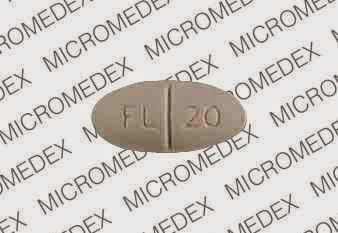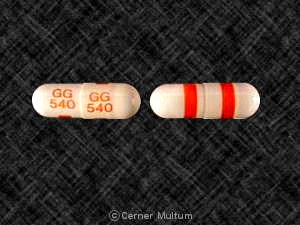FLUOXETINE AND OLANZAPINE
(floo OX eh teen and oh LAN za peen) Brand: Symbyax










What is the most significant information I must know about fluoxetine and olanzapine?
• You must not use fluoxetine and olanzapine if you also take pimozide or thioridazine, or if you are being treated with methylene blue injection.
• Do not use fluoxetine and olanzapine if you have taken an MAO inhibitor in the past 14 days. A dangerous drug interaction could occur. MAO inhibitors include isocarboxazid, linezolid, phenelzine, rasagiline, selegiline, and tranylcypromine. You should wait at least 14 days after stopping an MAO inhibitor till you can take fluoxetine and olanzapine. You should wait 5 weeks after stopping fluoxetine and olanzapine till you can take thioridazine or an MAOI.
• This medicine is not for use in psychotic conditions related to dementia. Olanzapine may reason heart failure, sudden death, or pneumonia in older adults with dementia-related conditions.
• Some young people have thoughts about suicide when first taking an antidepressant. Your doctor will need to check your progress at regular visits while you are using fluoxetine and olanzapine. Your family or another caregivers must also be alert to changes in your mood or symptoms.
What is fluoxetine and olanzapine?
• Fluoxetine is an antidepressant in a group of drugs called selective serotonin reuptake inhibitors (SSRIs).
• Olanzapine is an antipsychotic medicine. These drugs affect chemicals in the brain.
• Fluoxetine and olanzapine is a combination medication used to treat depression caused by bipolar mess (manic depression). Fluoxetine and olanzapine is also used to treat depression after at least 2 another medications have been tried without successful treatment of symptoms.
• Fluoxetine and olanzapine may also be used for another purposes not listed in this medicine guide.
What must I discuss with my healthcare provider till taking fluoxetine and olanzapine?
• You must not use fluoxetine and olanzapine if you are allergic to it, if you also take pimozide or thioridazine, or if you are being treated with methylene blue injection.
• Do not use fluoxetine and olanzapine if you have taken an MAO inhibitor in the past 14 days. A dangerous drug interaction could occur. MAO inhibitors include isocarboxazid, linezolid, phenelzine, rasagiline, selegiline, and tranylcypromine.
• You should wait at least 14 days after stopping an MAO inhibitor till you can take fluoxetine and olanzapine. You should wait 5 weeks after stopping fluoxetine and olanzapine till you can take thioridazine or an MAOI.
• This medicine is not for use in psychotic conditions related to dementia. Olanzapine may reason heart failure, sudden death, or pneumonia in older adults with dementia-related conditions.
• Speak your doctor about all another antidepressants you take, especially Celexa, Cymbalta, Desyrel, Effexor, Lexapro, Luvox, Oleptro, Paxil, Pexeva, Prozac, Viibryd, or Zoloft.
• To create certain fluoxetine and olanzapine is safety for you, speak your doctor if you have:
· diabetes, tall cholesterol or triglycerides;
· a history of low white blood cell counts;
· seizures or epilepsy;
· narrow-angle glaucoma;
· heart malady, tall or low blood pressure, or a history of heart onslaught or stroke;
· paralytic ileus (a stomach disorder);
· breast cancer;
· enlarged prostate; or
· a history of drug abuse or suicidal thoughts.
• Some young people have thoughts about suicide when first taking an antidepressant. Your doctor will need to check your progress at regular visits while you are using fluoxetine and olanzapine. Your family or another caregivers must also be alert to changes in your mood or symptoms.
• FDA pregnancy category C. Taking an SSRI antidepressant (fluoxetine) during pregnancy may reason serious lung problems or another complications in the child. However, you may have a relapse of depression if you stop taking your antidepressant.
• Taking antipsychotic medicine (olanzapine) during the recent 3 months of pregnancy may reason problems in the newborn, such as withdrawal symptoms, breathing problems, feeding problems, fussiness, tremors, and limp or stiff muscles. However, you may have withdrawal symptoms or another problems if you stop taking your medication during pregnancy.
• Speak your doctor right away if you become pregnant while taking fluoxetine and olanzapine. Do not start or stop taking this medication during pregnancy without your doctor's advice.
• Fluoxetine and olanzapine can pass into breast milk and may harm a nursing child. You must not breast-feed while you are taking this medication.
• Do not give this medicine to anyone under 18 years old without medical advice.
How must I take fluoxetine and olanzapine?
• Follow all directions on your prescription label. Your doctor may occasionally change your doze to create certain you get the excellent results. Do not take this medication in larger or less amounts or for longer than recommended.
• You may take fluoxetine and olanzapine with or without food. Take the medication at the same time every day.
• Olanzapine can reason tall blood sugar (hyperglycemia). If you are diabetic, check your blood sugar levels on a regular basis while you are taking olanzapine.
• It may take up to 4 weeks till your symptoms improve. Hold using the medicine as directed and speak your doctor if your symptoms do not improve.
• Store at room temperature away from moisture and heat.
What happens if I miss a dose?
• Take the missed doze as soon as you remember. Skip the missed doze if it is nearly time for your following scheduled doze. Do not take extra medication to create up the missed dose.
What happens if I overdose?
• Search abnormal medical attention or call the Poison Help line at 1-800-222-1222.
What must I avoid while taking fluoxetine and olanzapine?
• Drinking alcohol can magnify determined side effects of fluoxetine and olanzapine.
• Fluoxetine and olanzapine may impair your thinking or reactions. Be careful if you drive or do anything that requires you to be alert.
What are the possible side effects of fluoxetine and olanzapine?
• Get abnormal medical help if you have any of these signs of an allergic reaction: skin rash or hives; difficulty breathing; swelling of your person, lips, tongue, or throat.
• Report any new or worsening symptoms to your doctor, such as: mood or behavior changes, anxiety, panic attacks, trouble sleeping, or if you feel impulsive, irritable, agitated, hostile, aggressive, restless, hyperactive (mentally or physically), more depressed, or have thoughts about suicide or hurting yourself.
• Call your doctor at once if you have:
· very stiff (rigid) muscles, tall fever, sweating, confusion, quick or uneven heartbeats, tremors, feeling like you might pass out;
· agitation, hallucinations, overactive reflexes, vomiting, diarrhea, loss of coordination;
· jerky muscle movements you can't control, seizure (convulsions);
· feeling very thirsty or hot, being unable to urinate, hard sweating, or hot and dry skin;
· sudden and severe headache, chest pain, numbness, and problems with vision, speech, or balance;
· frequent urination, overweening hunger;
· upper stomach pain, dark urine, jaundice (yellowing of the skin or eyes); or
· sudden weakness or ill feeling, chills, sore throat, mouth sores, red or swollen gums, trouble swallowing, skin sores, cool or flu symptoms, cough, trouble breathing.
• General side effects may include:
· dry mouth, heighten appetite, weight gain;
· feeling drowsy or tired;
· blurred vision; or
· swelling in your hands or feet.
• This is not a complete list of side effects and others may occur. Call your doctor for medical advice about side effects. You may message side effects to FDA at 1-800-FDA-1088.
What another drugs will affect fluoxetine and olanzapine?
• Taking fluoxetine and olanzapine with another drugs that create you sleepy or slow your breathing can magnify these effects. Ask your doctor till taking fluoxetine and olanzapine with a sleeping pill, narcotic pain medication, muscle relaxer, or medication for anxiety, depression, or seizures.
• Ask your doctor till taking a nonsteroidal anti-inflammatory drug (NSAID) for pain, arthritis, fever, or swelling. This includes aspirin, ibuprofen (Advil, Motrin), naproxen (Aleve), celecoxib (Celebrex), diclofenac, indomethacin, meloxicam, and others. Using an NSAID with fluoxetine and olanzapine may reason you to bruise or bleed easily.
• Much drugs can interact with fluoxetine and olanzapine. Not all possible interactions are listed here. Speak your doctor about all your medications and any you start or stop using during treatment with fluoxetine and olanzapine, especially:
· any another antidepressant or medicine to treat mental illness;
· lithium;
· St. John's Wort;
· tryptophan (sometimes called L-tryptophan);
· vinblastine;
· blood pressure medication;
· a blood thinner such as warfarin, Coumadin;
· heart medication--digitoxin, flecainide, propafenone, and others;
· medication to treat anxiety--alprazolam, buspirone, diazepam;
· medication to treat Parkinson's disease--bromocriptine, cabergoline, pergolide, pramipexole, ropinirole;
· migraine headache medicine--almotriptan, frovatriptan, sumatriptan, naratriptan, rizatriptan, zolmitriptan; or
· seizure medication--carbamazepine, phenytoin.
• This list is not complete and much another drugs can interact with fluoxetine and olanzapine. This includes prescription and over-the-counter medicines, vitamins, and herbal commodity. Give a list of all your medicines to any healthcare provider who treats you.
Where can I get more information?
• Your pharmacist can provide more information about fluoxetine and olanzapine.
Remember, hold this and all another medicines out of the reach of children, never share your medicines with others, and use this medicine only for the indication prescribed.
Disclaim: Each effort has been made to ensure that the information provided by Cerner Multum, Inc. ('Multum') is accurate, up-to-date, and complete, but no guarantee is made to that effect. Drug information contained herein may be time sensitive. Multum information has been compiled for use by healthcare practitioners and consumers in the United States and therefore Multum does not warrant that uses external of the United States are appropriate, unless specifically indicated otherwise. Multum's drug information does not endorse drugs, diagnose patients or recommend therapy. Multum's drug information is an informational resource designed to assist licensed healthcare practitioners in caring for their patients and/or to serve consumers viewing this service as a supplement to, and not a substitute for, the expertise, skill, knowledge and judgment of healthcare practitioners. The absence of a warning for a given drug or drug combination in no way must be construed to indicate that the drug or drug combination is safety, effective or appropriate for any given patient. Multum does not assume any responsibility for any aspect of healthcare administered with the help of information Multum provides. The information contained herein is not intended to cover all possible uses, directions, precautions, warnings, drug interactions, allergic reactions, or adverse effects. If you have questions about the drugs you are taking, check with your doctor, nurse or pharmacist.